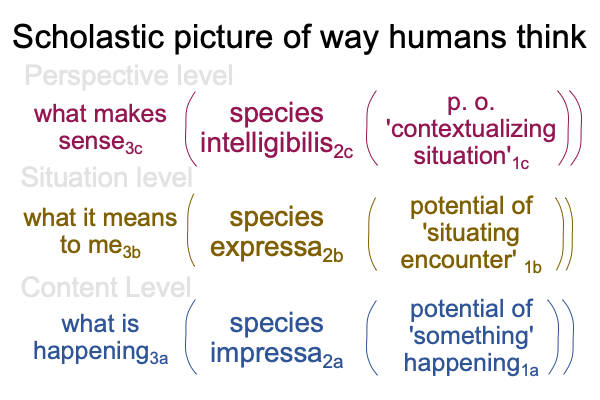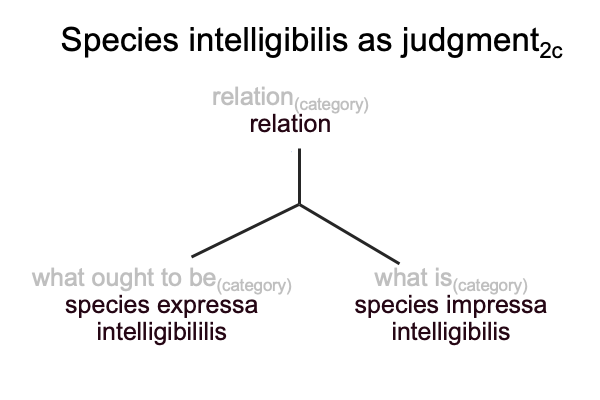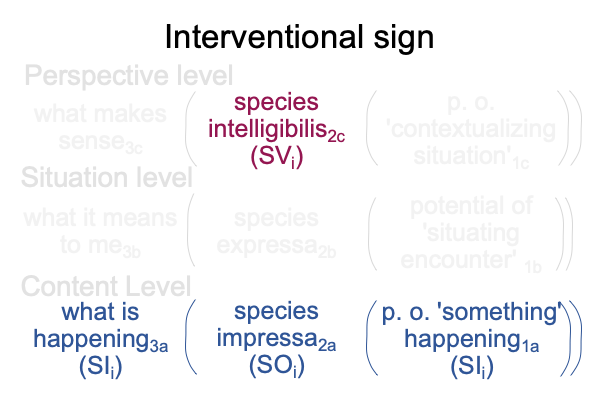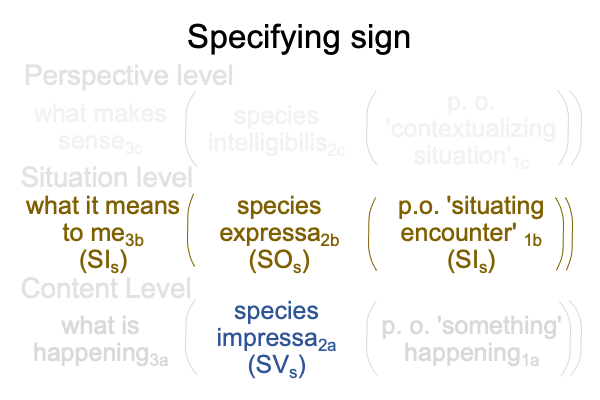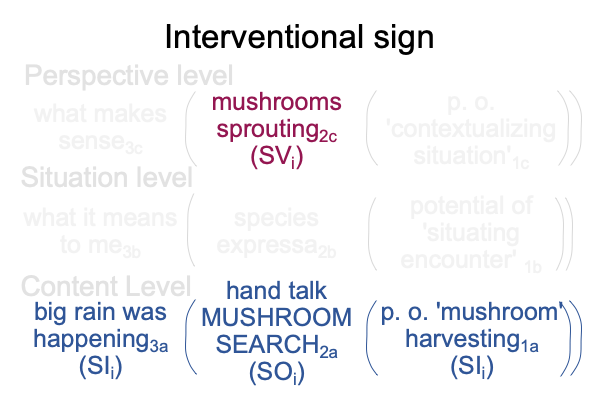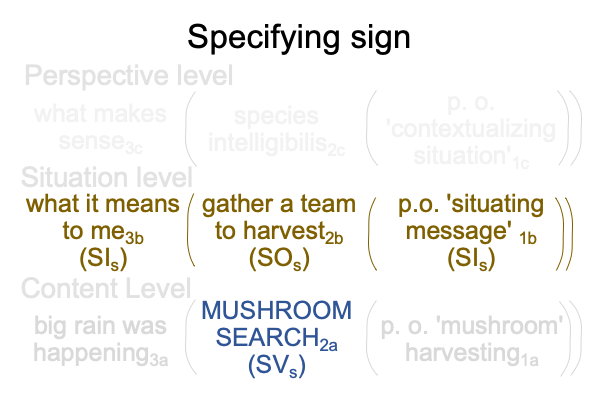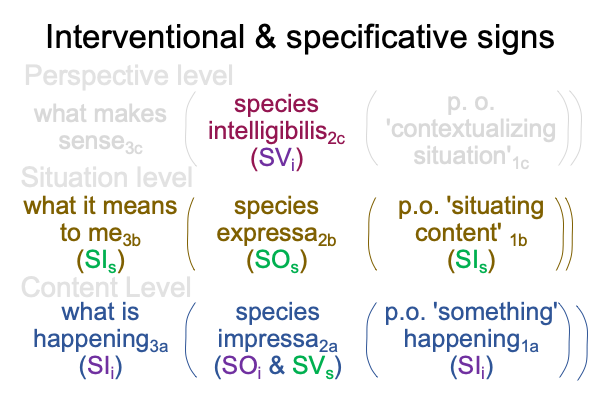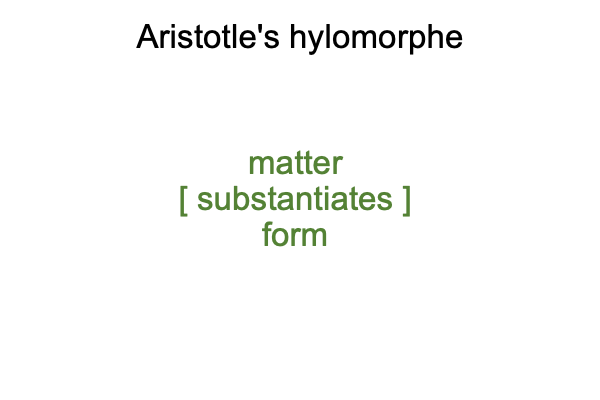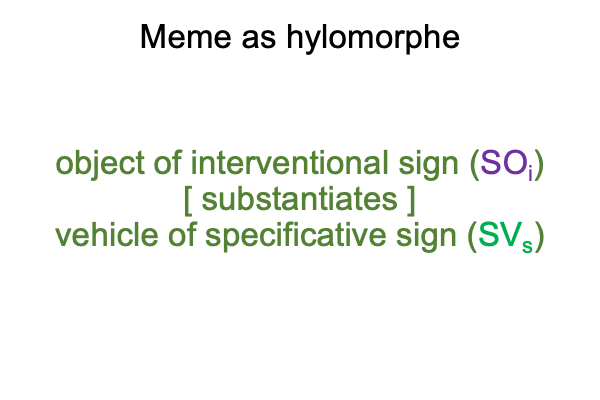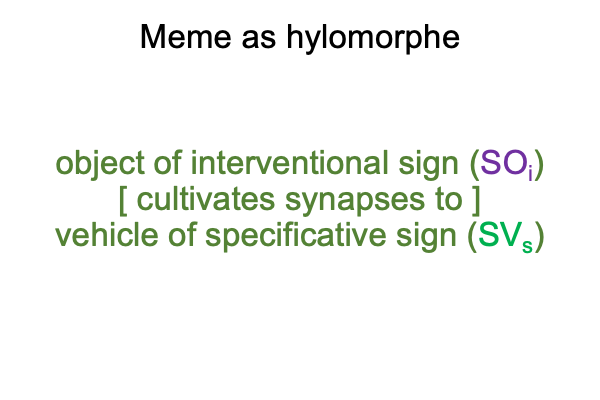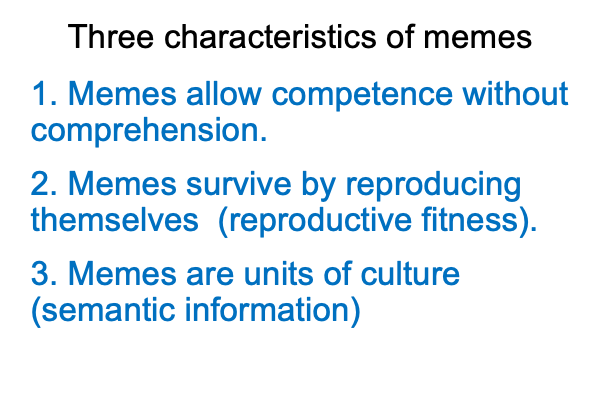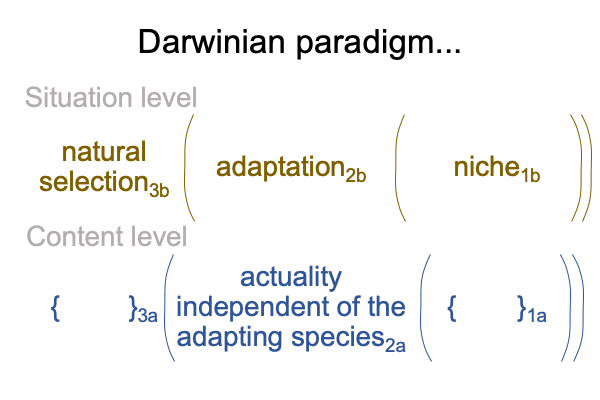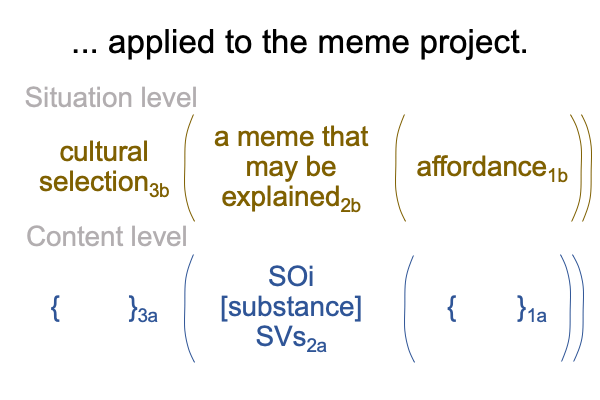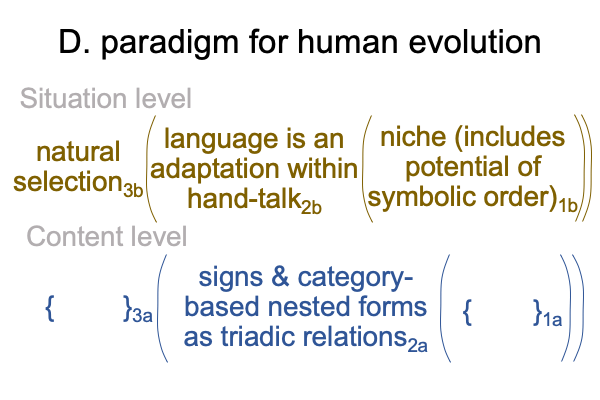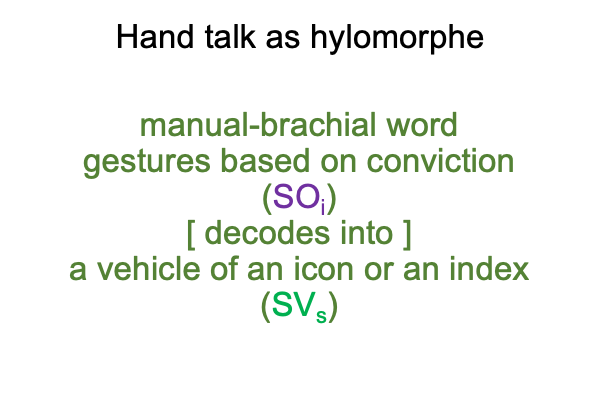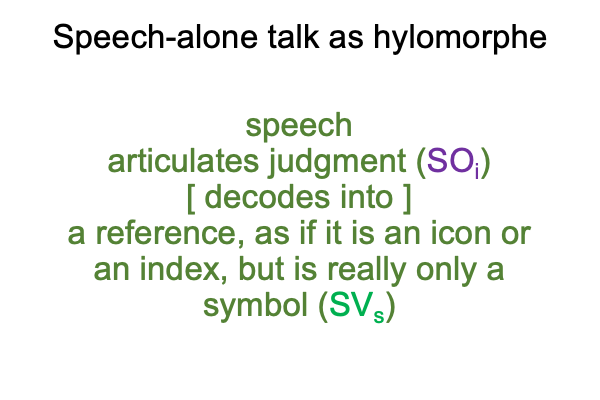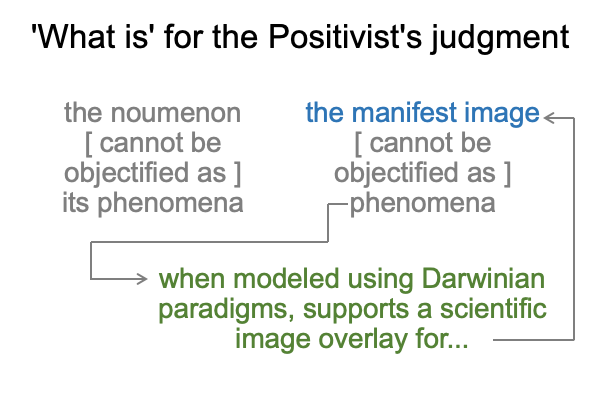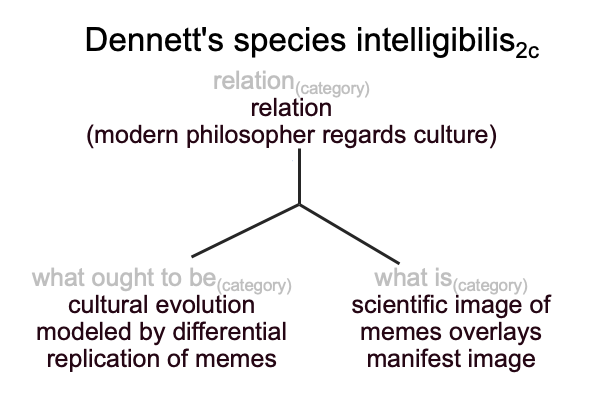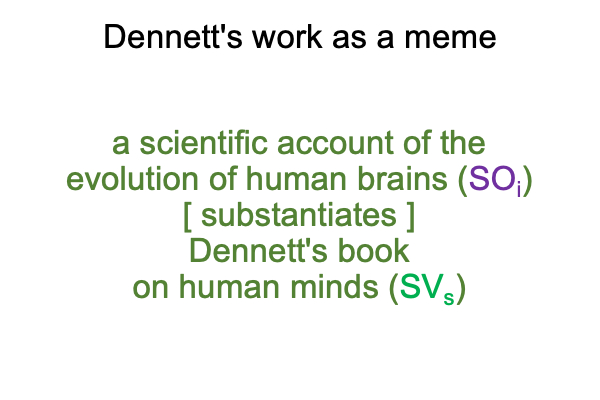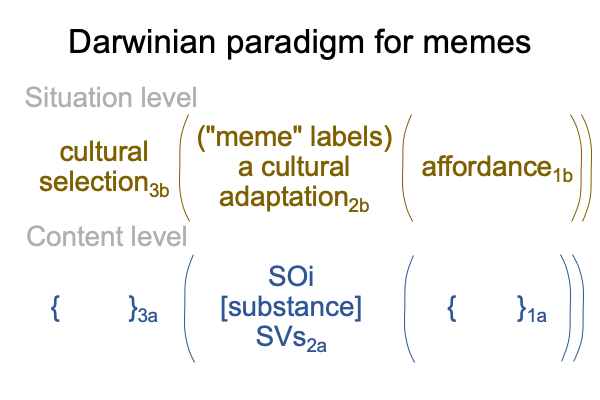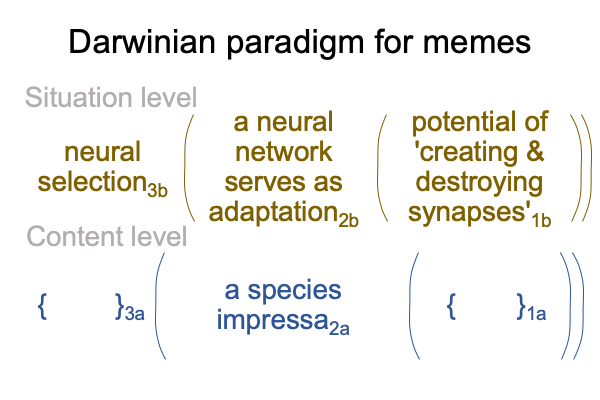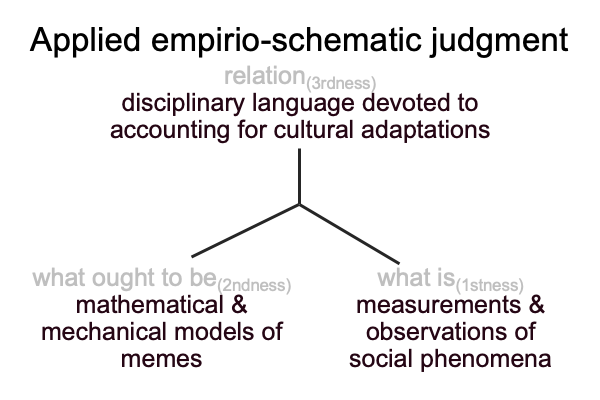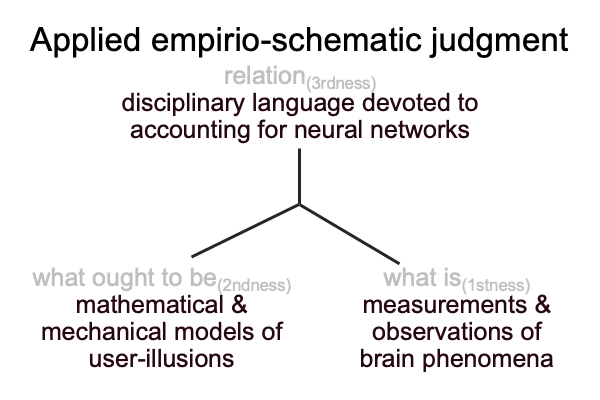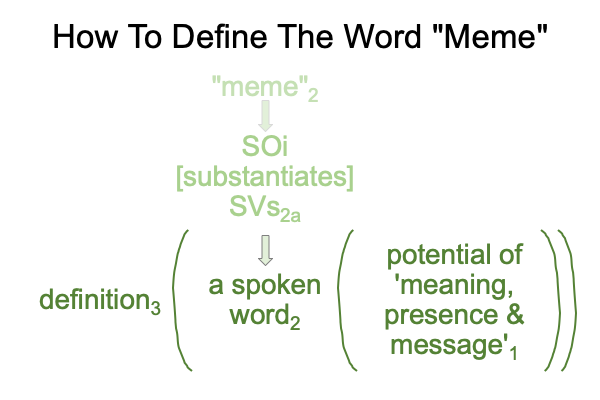What Is A Meme? (C of G, Part 11 of 20)
0101 With a single chomp of her mighty mouth, along with some head thrashing, Daisy can put an end to the neighbor’s cat. I suppose that I restrain her from what her species expressa2b calls her to do, because I have her on a leash. The leash puts Daisy’s species expressa2b into perspective.
0102 Does this imply that there is another sign? Does this sign connect the situation and perspective levels?
Daisy’s fear and loathing of the cat2b (SVe) stands for her being restrained by the leash and thereby confounded2c (SOe) in regards to the question, “Does this makes sense?”3c, contextualizing the possibility of putting the situation into perspective1c (SIe).
The subscript, “e”, stands for “exemplar”.
Here is a picture.
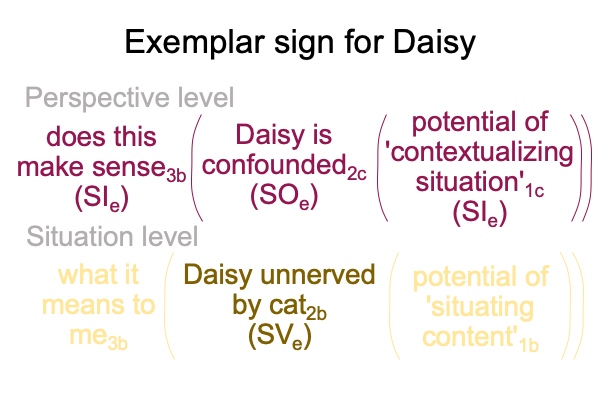
0103 The exemplar sign-vehicle (SVe) coincides with the specifying sign-object (SOs).
Correspondingly, the exemplar sign-object (SOe) puts the specifying sign-object (SOs) into perspective. This perspective includes both Daisy and myself, along with the catnip, the cat and my trash-toting neighbor.
0104 Plus, there is a question about nomenclature.
For scholastics, the specifying sign starts with subjective content and ends with objective situation. The exemplar signstarts with an intersubjective situation and ends with a suprasubjective perspective. So, the situation-level actuality is “objective” (SOs) for the former and “intersubjective” (SVe) for the latter.
For moderns, only two terms are employed, “subjective” and “objective””. Scholastic terms shift when stepping from the specifying sign to the exemplar sign. For moderns, “subjective” opinions often address the question, “What does it mean to me?”3b, while “objective” facts raise the question, “Does this make sense?”3c.
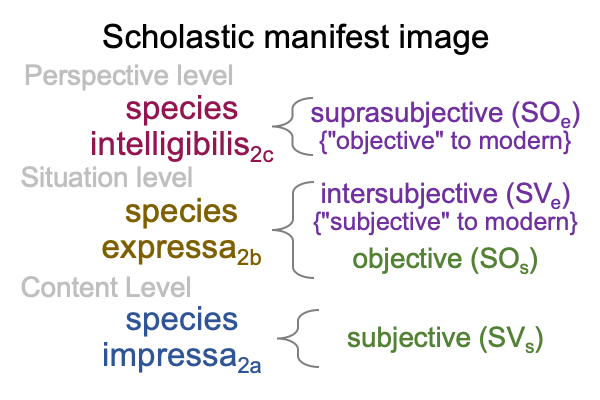
This terminological shift is discussed in Razie Mah’s blog for October 2023, Looking at John Deely’s Book (2010) “Semiotic Animal”.
0105 The exemplar sign object2c (SOe) makes sense3b because it may be true, or believable, or commonly accepted, or logical with respect to an affordance. What is that affordance? May I call it, “intelligibility”? Oh, that could bring a smile to the face of a philosopher and a grimace to the face of a scientist.
0106 Let me return to the scholastic manifest image for the example of Daisy, my dog, who I knowingly place into proximity to the neighbor’s miserable feline, soon after the neighbor lady takes out her trash. Is there a problem with planting catnip in the verge near where we regularly stroll? Surely, the neighbor’s husband, who is rarely at home to tend the verge, does not mind. Plus, the cat clearly loves the mint.
Here is a picture.
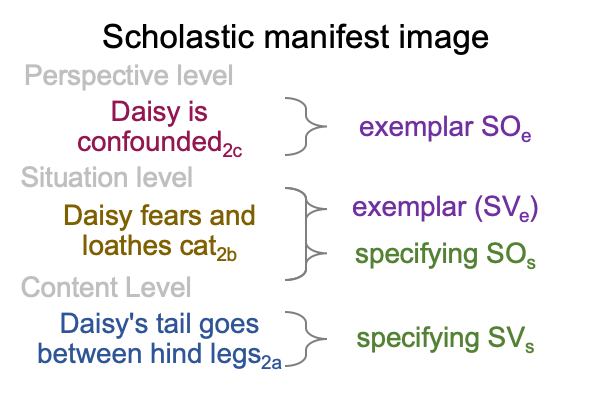
0107 The exemplar sign-object (SOe) contains a judgment.
Recall, a judgment is a relation between what is and what ought to be.
0108 In order to arrive at my judgment2c, I first look at the virtual nested form in the realm of actuality.
To me, Daisy’s confoundedness2c serves as a virtual normal context that brings the actuality of unnerved Daisy2b into relation with the possibilities inherent in her tail tucked between her legs2a.
I next transfer the virtual nested form into the triadic structure of judgment.
Daisy’s confoundedness (relation, thirdness) brings her tucked tail as an universal being (what is, secondness) into relation to Daisy’s fear and loathing as an intelligible being (what is, firstness).
0109 Yes, whatever is going on in Daisy’s mind2c contributes to my judgment2c, even though it (whatever “it” is) cannot be articulated.
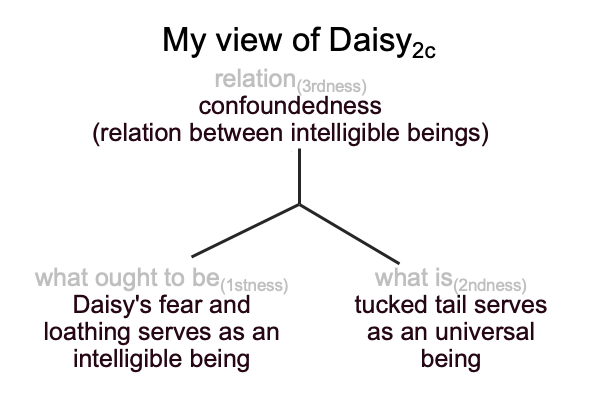
0110 For Daisy, a relation that I am not privy to2c virtually brings fear and loathing2b into relation with that catnip-addled feline2a.
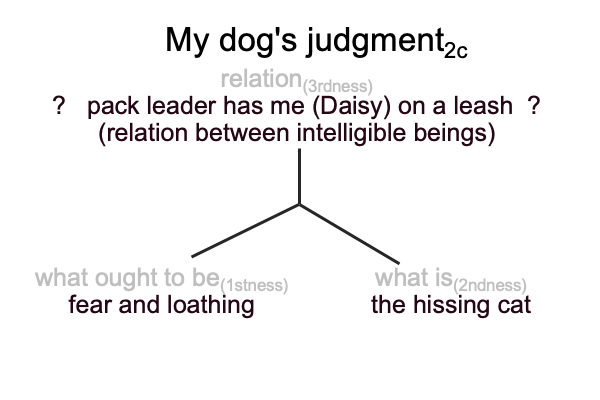
0111 The triadic structure of judgment fits neatly into the sign-object of the exemplar sign as well as the perspective-level actuality2c of the scholastic’s three-level interscope.

